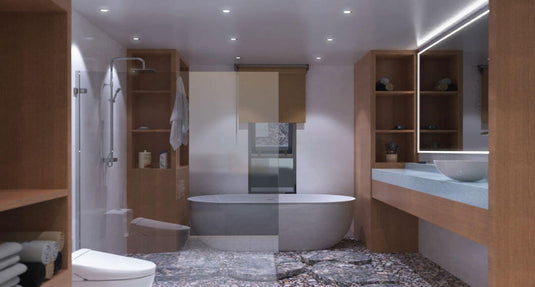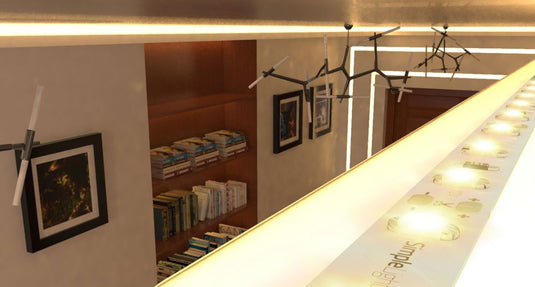Although they may all look somewhat similar, LED downlights are not the same. You can get them in various shapes, sizes, finishes, and colour temperatures. Also, some can be adjustable, some are water-resistance, some can change colours, and some are suited outdoors. If you don't use the correct downlights in certain parts of your home, instead of enjoying the brightness brought by your lights, you may end up with a headache dealing with a short circuit!
So, before you start buying and installing, get to know the main types of downlights that you can find.
IP Rating: Why does it matter?
Before diving into the main part, let's take a detour to IP rating. What is it, and why does it matter? The IP rating is always indicated with the capital letters I and P followed by two numbers. IP stands for ingress protection, which means the protection rating of your lights against solids and liquids. The first number indicates the protection against solids, and the second number represents the protection against liquids.
So, if you see that your lights have a higher IP rating, it means it has a more substantial barrier against solids and liquids. For your bathroom and outdoors, it's ideal to get an IP65 and up to ensure that your lights can withstand sudden weather changes and liquids.
What are the common types of downlights?
Now that you know about the importance of IP rating, it’s time to get into the main part, the downlight types. Here are the downlights that you can mostly see in your home!
IP20 Fixed Downlight
This is the most popular of the many GU10 downlight types you can find in the market. Fixed downlights are the most basic, with light beams pointing directly down. They have the smallest diameter and the most affordable price. You can incorporate them anywhere in your home, including the living room, bedroom, dining room, and kitchen. While it's acceptable in some parts of the bathroom (areas where water cannot reach), it's better to be safe, so you should go with a fitting that's at least IP44 rated instead.

IP65 Bathroom Downlight
This downlight type is primarily used in the bathroom, but you can incorporate them anywhere. Bathroom downlights are designed with a water and dust seal, so you don't need to worry about water splashes reaching your lights. Aside from your bathroom, it's also suitable in your kitchen, particularly the area near your sink. You never know; you may get startled and accidentally splash your ceiling lights!
IP20 Adjustable Downlight
This type of downlight comes with an adjustable gimbal that allows you to redirect the direction of the light beam to where you want it to be. You can direct it on a cupboard or illuminate a specific object or artwork. Adjustable downlights are more expensive and have a larger cut-out hole requirement. In addition, you can also use this downlight for sloped ceilings to offset the slope and illuminate directly down.
IP65 Adjustable Downlights
With this downlight, you get a combination of a bathroom downlight and an adjustable downlight. Compared to the other categories, this fixture does not come in a lot of options. However, it can be helpful for your bathroom vanity since you can conveniently redirect the beams so you can clearly see your face while preparing in the morning and before going to bed.





